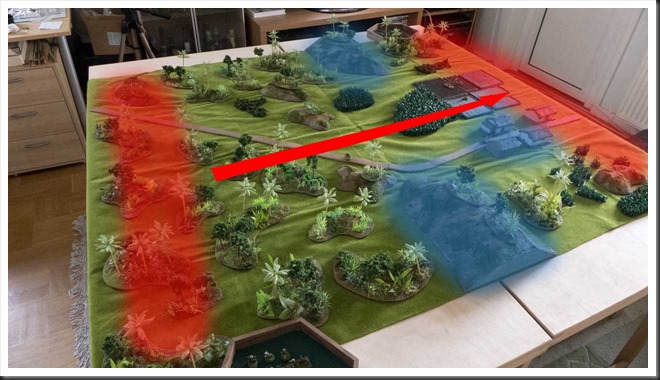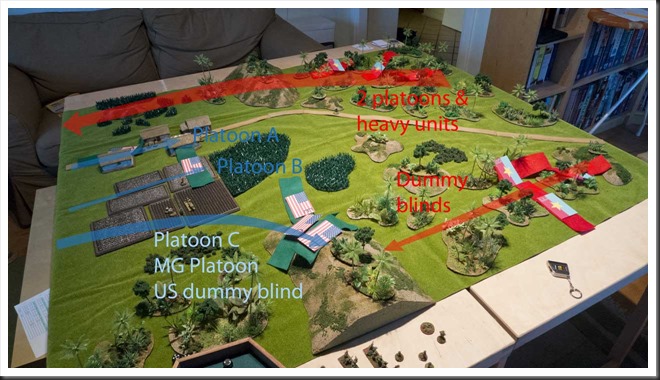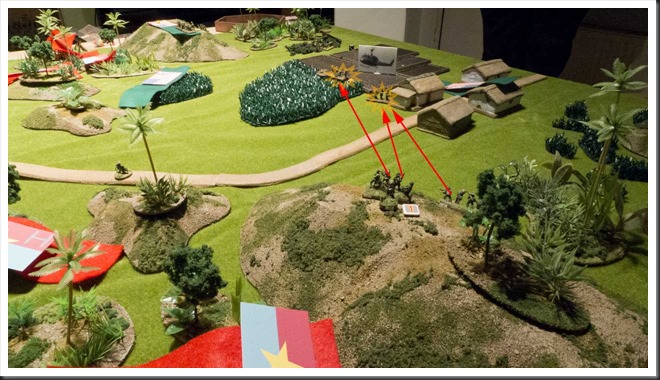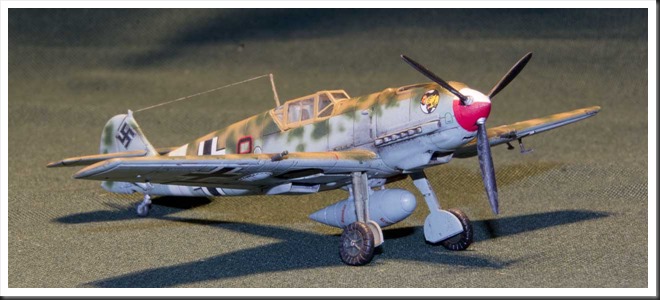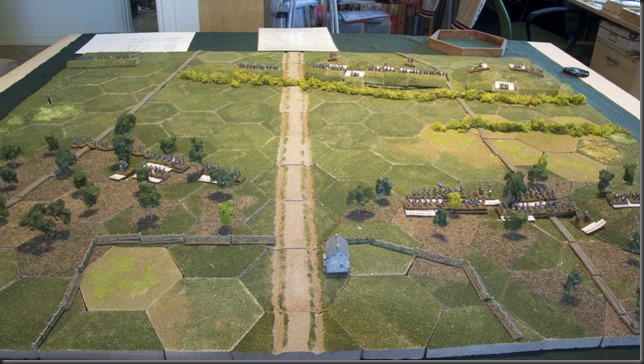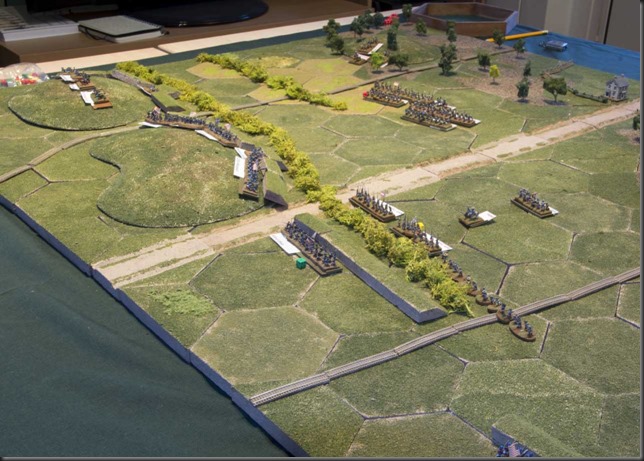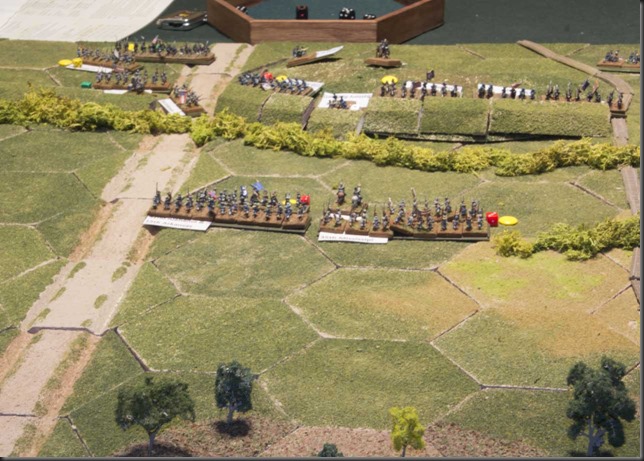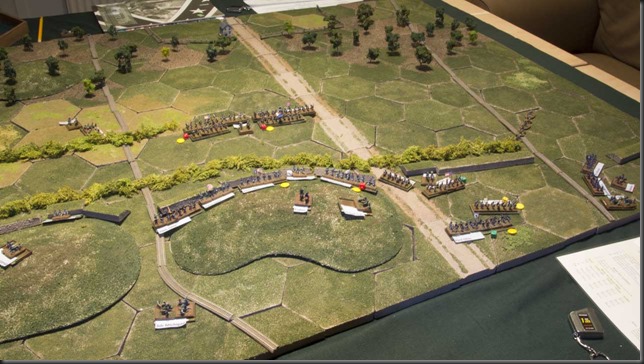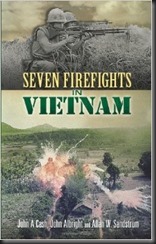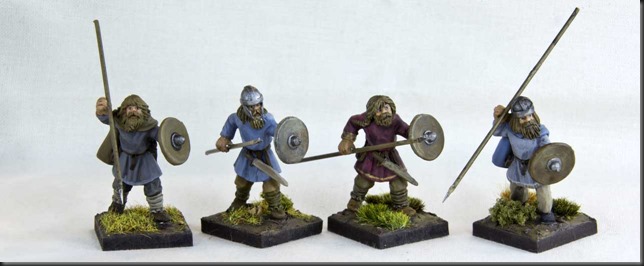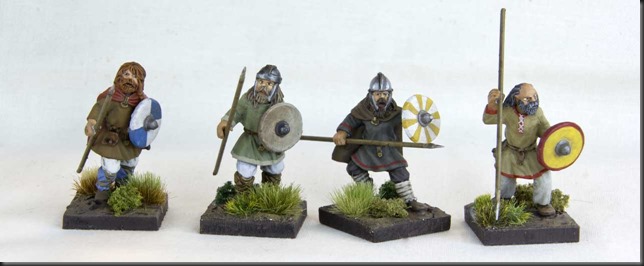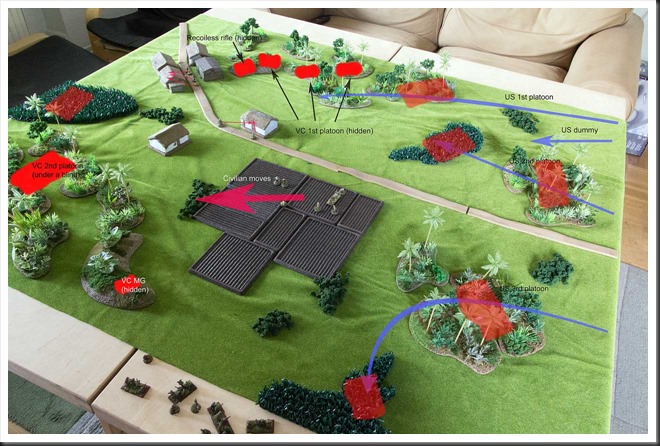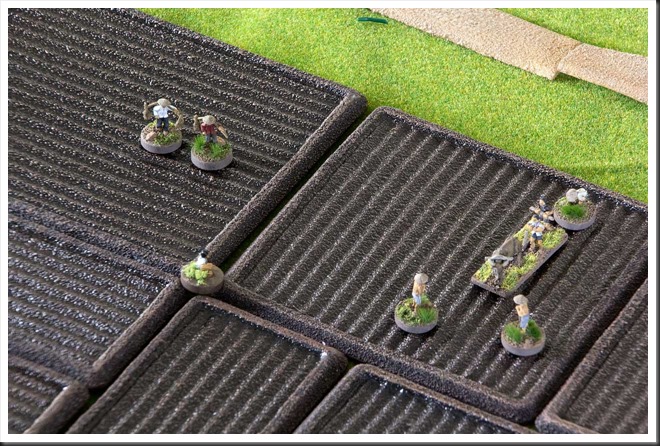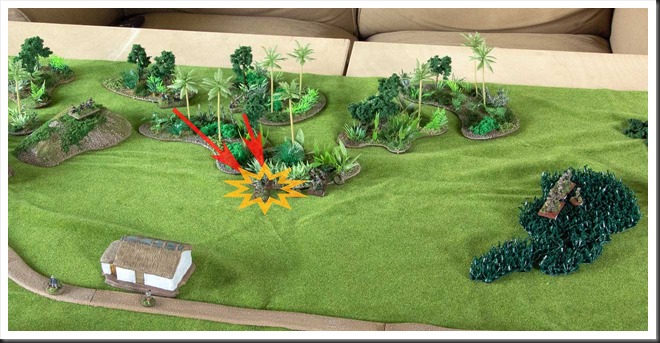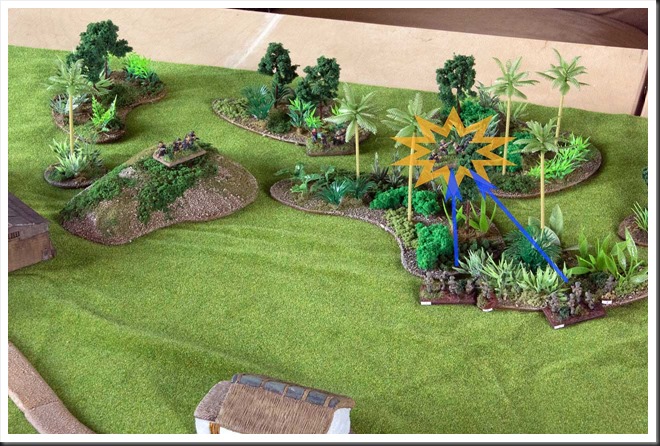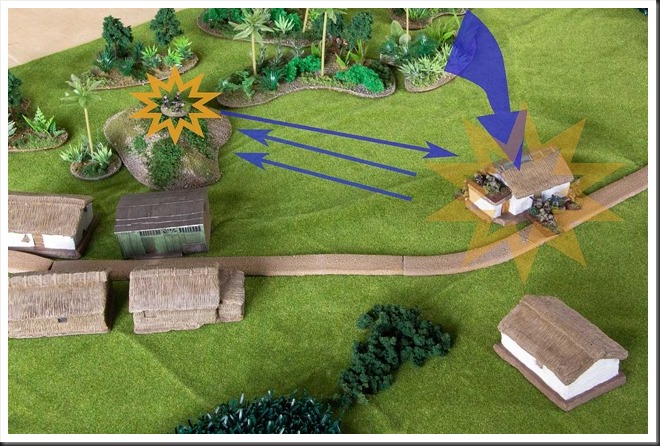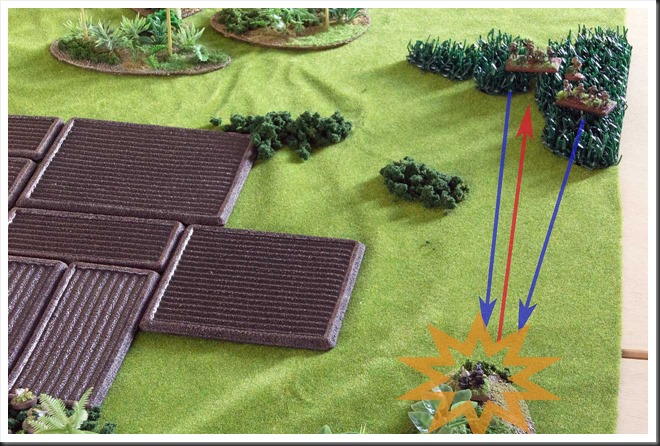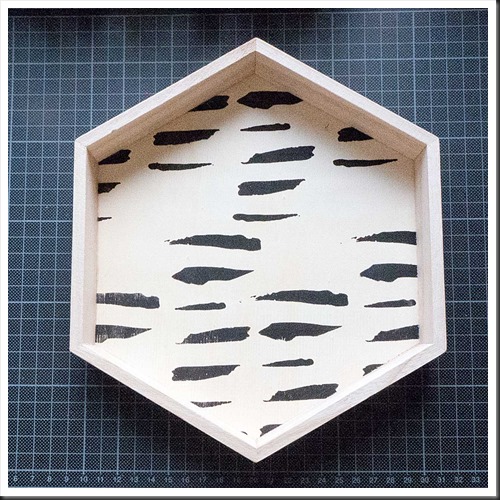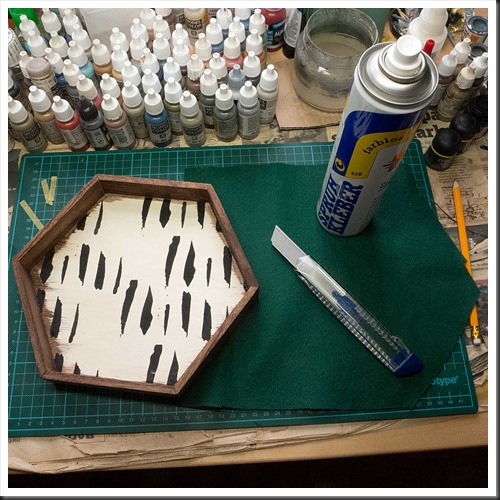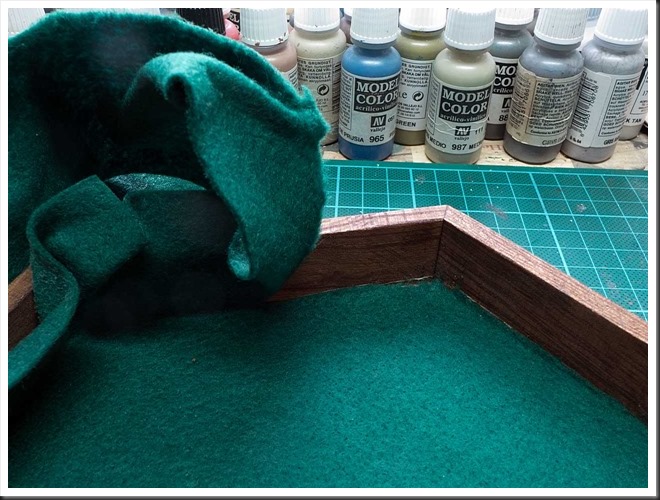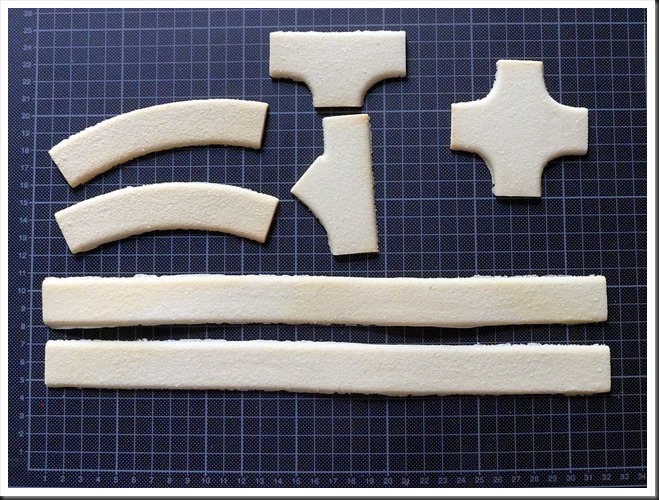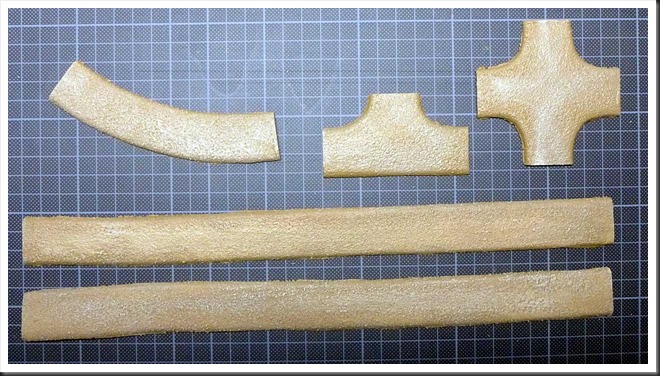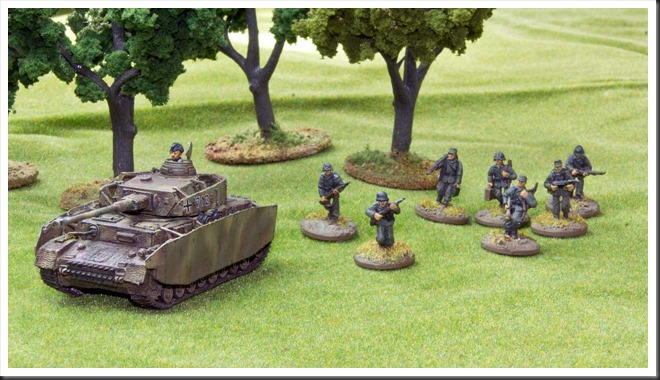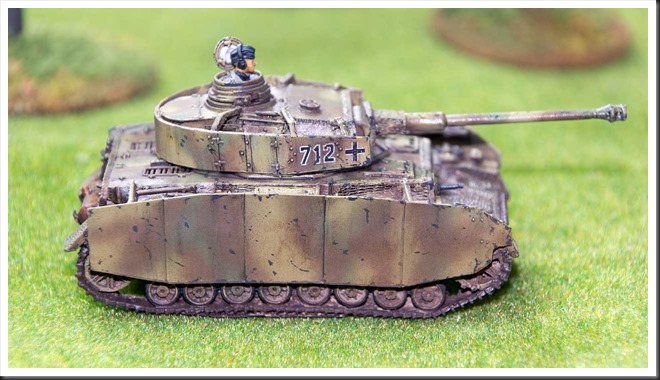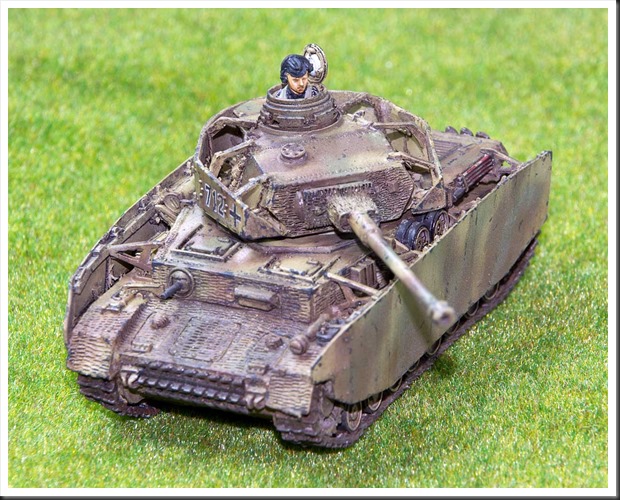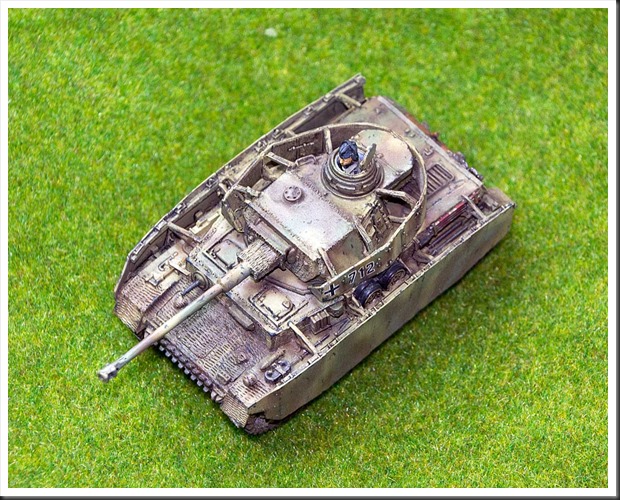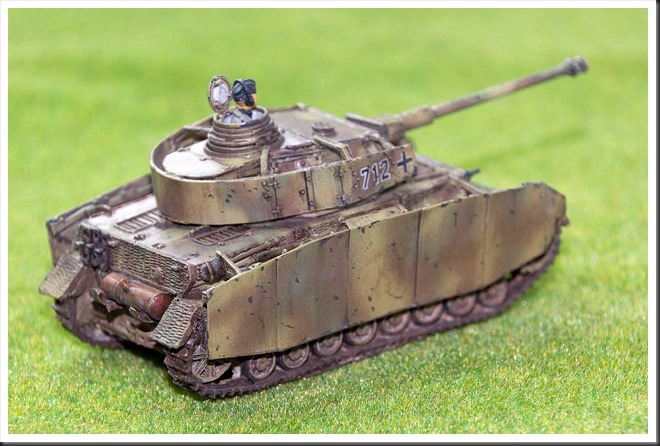Yesterday, H. dropped by and that gave me opportunity to have another go at ‘Charlie Don’t Surf’. This time around I’ve decided to give scenario generator a limited try, so a couple of words about how it works is probably suitable. In CDS, each side is provided with a selection of four different types of generic scenarios. When scenario generator is used in full, players are supposed to roll for the scenario type first, next for variables in scenario type assigned for their side and finally for the forces that will participate in the game (usually a company with some support). I’ve decided to simplify things a bit and, lazy as I am, I’ve reused the OOB-s from the previous game. Next I’ve assigned a ‘Sweep’ scenario for U.S. side and ‘Evade’ for VC.
Scenario
‘Sweep’ scenario type requires for the Allied side to make… well… a sweep, from point A to point B. While doing that, the troops are assigned up to three objectives. In this case, U.S. side had a search of the village as its primary goal, recon of the heights as secondary and interogation of locals as triary.
In ‘Evasion’ scenario, Viet Cong had to get out of Dodge. An exit edge is randomly decided before start of the game and the troops were then placed on the opposite side. The main goal is to get out with as many troops as possible. Picture below shows the scenario overview before start of the game.
Random card draw assigned VC side to yours truely. H. was kind enough to take upon himself the task of U.S. commander.
My plan was rather simple. Since I had a bunch of local guys under my command, I didn’t want any extended shootous with the enemy. Thanks to the same fact (control of local force units), I also had a whole bunch of dummy blinds at my disposal. They would come in handy as a massive decoy on one flank, while I sneaked of the board on the other.
H. decided to take care of buisness as quickly as possible and selected the edge closest to the village as his entry point. Two platoons immediately headed of toward the village, obviously with the goal of ransacking the huts and intimidating the villagers into giving up any info on Charlie they may have. One of the hills would be the initial destination of the remaining platoon and MG platoon.
The game
Why abandon the winning concept? Let’s have a look at the pictures?
First phase of the game was a true sleeping pill. H. moved over open terrain and rapidly occupied the village and high ground on the opposite side of the road. I on the other hand had a much worse time getting my troops going. Not only did I manage to roll an amazing amount of ones and twos, but the jungle terrain sapped about half of whatever movement allotment I managed to scrap together.
A somewhat bizzare situation occured during that phase of the game. Since none of my units/blinds could spot H.s blinds and they in turn had no targets to shoot at, H. could not deploy his troops. On the fly, we decided that his blind in the village could search two hootches per round, while the officer was allowed to interrogate one villager per round withouth having to deploy. My slow approach gave H. plenty of time to find the two rice stores hidden in the huts, thereby achieving his main objective. The force sent up the hill climbed it, found nothing and decided to take a rest.
When my dummy blinds finally reached the position occupied by H., another odd situation occured. H. was apparently unwilling to abandon the high ground, while I wasn’t very interested in pushing on and disclosing my bluff. And so, for most of the game, we just sat there, starring at… nothing. In the end, H. broke the impass by pushing his dummy blind into my ‘troop concentration’, revealing a lot of empty space.
On the other side, things finally heated up as my least letargic platoon scrambled up the high ground. U.S. platoon in the village was still in the hoots, but the one supporting it was in the rice paddies, giving me a perfect opportunity to blast them. One of the americans fell, critically wounded, the rest took cover wherever they could. However, a medevac helicopter arrived swiftly, fetching the wounded soldier to field hospital (no, no helicopters are painted yet, thus improvised marker).
A nasty little firefight followed. I brought up my second platoon to the edge of the jungle, hoping on suppressing yanks in the village with their firepower. At the same time I intended on leap-frogging the platoon on the hill toward my exit edge. Ideally, my heavy weapons elements (recoiless gun and an MG) would be able to reach the low hill facing the flank of the village and keep the yanks pinned, allowing the rest to exit.
Plans are one thing, reality (or dice) allow for something very different. Fire from my platoon in the jungle was completely innefectual, while the heavy weapons group continued to take its sweet time getting into position. This forced the platoon on the hill into an exchange of fire with H.s units around the village. My fire had some effect – one american soldier fell dead, while yet another was critically wounded. Another medivac was called and responded as quickly as its predecessor. The rest of americans blasted into the jungle line, killing one of my soldiers and severly surpressing one of my squads.
H.’s MG platoon on the far hill also opened up, taking my rear platoon under fire. This caused me some concern. MG-s are effective at much longer range than normal infantry small arms, so the two ‘Pigs’ on that hill reached comfortably edge of the jungle on the opposite side of the road. Given time they would hurt me. It was time to get back into the jungle, after all my goal was to get out, not to engage the enemy.
It was at that time that H. announced that he would now be pulling back from the village area. After all, his primary action was accomplished and his casualties were a bit alarming. Also, by now we’ve been at it for four hours and were a bit tired. And so, we called it quits. Picture below shows an overview of the situation at the end of the game, as seen from the hill occupied by the Americans.
Musings after the battle
Yesterday’s game was one of those slightly odd occasions where the scenario ‘starved’ the enthusiasm out of the players by couple of mistakes in its design. To begin with, my movement into contact took far too long. As it turns out, this was mainly caused by me forgetting the fact that units on blinds can ignore first –1 in movement penalties in difficult terrain – a valuable lesson for the future. This –1 may not sound as much, but it is applied on every dice, meaning a reduction of movement by 4’’ per turn if a blind uses all its dice for that purpose.
Another thing that I think would make improve this setup immensly would be by moving the village into the center of the table. This would force U.S. side into more agressive movement, speeding up moment of contact. Funnily enough, a very similar scenario can be found in the Too Fat Lardies scenario book for ‘Charlie Don’t Surf’ – there, the village is placed smack in the middle of the table. I think I now know why that is. ![]()
And what about ‘Charlie Don’t Surf’ itself? Well, I still haven’t used rules for artillery, helicopters, air support and a whole bunch of other stuff, but in general terms it is what it is – ‘I Ain’t Been Shot, Mum’ with Vietnam flavour. If you like IABSM, you’ll like CDS. With two ‘Tea Break’ cards, chaos of the card driven game engine is managable and I really do like the fact that Big Men have action points that can be used to activate either platoons or squads.
However, the Blinds mechanism in ‘out of the box’ format still seems to suffer from same issue that I’ve first observed in ‘They Couldn’t Hit an Elephant’. If deployment of troops is restricted to the two situations specified in the rules, which is either when unit wishes to fire or is spotted by enemy, then situations such as this which occured at the start of our game are bound to happen! Naturally, most of them can be resolved by application of common sense and couple of ad hoc rules. At the same time, when they occur, they will at the very least put extra strain on game master or players. Furthermore, as we all know, supply of common sense can sometimes run out in heat of battle. ![]() Therefore I think that in the future games I will re-instate the rule I’ve already used in TCHAE games and allow players to voluntarily deploy their own troops from blinds at the end of each turn.
Therefore I think that in the future games I will re-instate the rule I’ve already used in TCHAE games and allow players to voluntarily deploy their own troops from blinds at the end of each turn.
